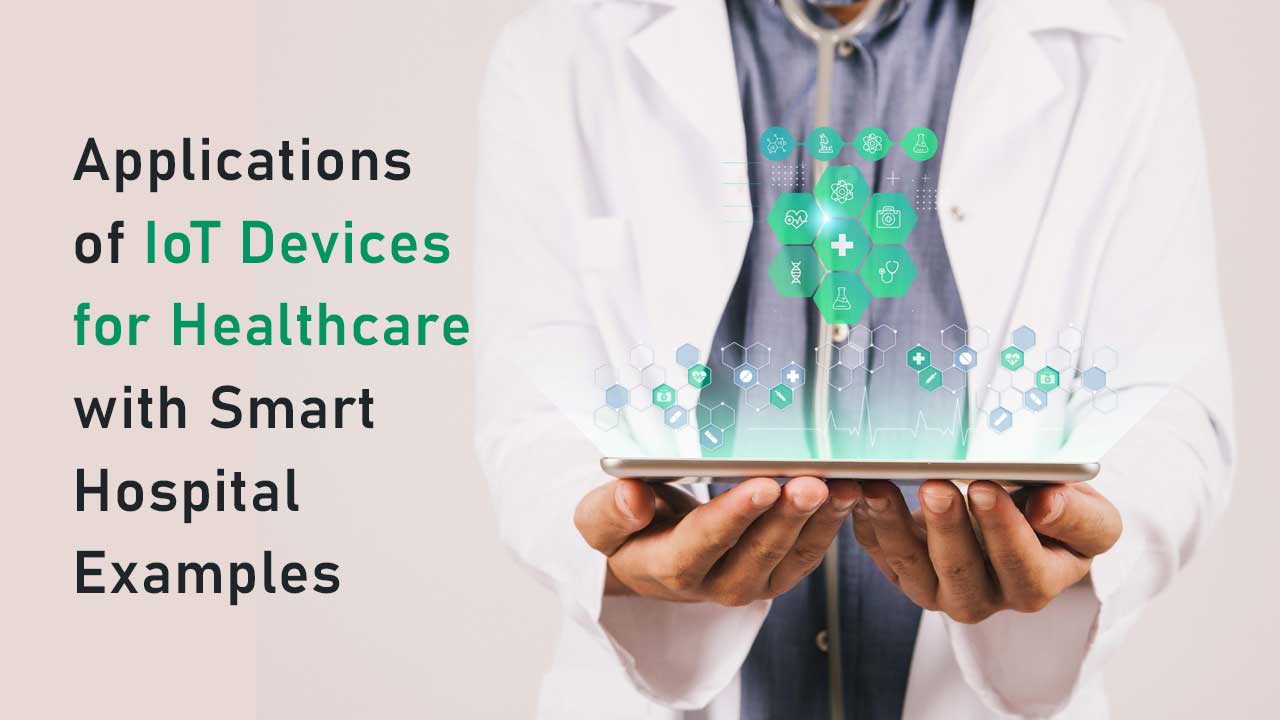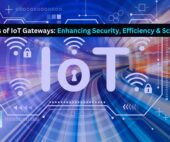Introduction
Healthcare is only one of several industries that have been transformed recently by the Internet of Things (IoT). IoT devices for healthcare have emerged as valuable tools in the medical field, providing real-time data monitoring, streamlined operations, and enhanced patient care.

This blog explores the diverse applications of IoT devices for healthcare or internet of things devices for healthcare, highlighting the benefits they bring to the industry. Through smart hospital examples, we will discover how IoT technology is transforming the way medical facilities operate and improve patient outcomes.
Remote Patient Monitoring
One of the biggest advantages of IoT devices for healthcare is remote patient monitoring. IoT-enabled wearables, such as smartwatches and fitness bands, allow continuous tracking of vital signs, including heart rate, blood pressure, and glucose levels. This data can be transmitted to healthcare professionals in real-time, allowing for quick response and early diagnosis of any health problems. For instance, patients with chronic conditions like diabetes or heart disease can lead more independent lives while being monitored by healthcare providers remotely.
Example: In a forward-thinking smart hospital, patients with cardiac conditions are provided with internet of things devices for healthcare, like IoT-enabled chest patches that continuously monitor their heart health. These patches send real-time data to the hospital’s central monitoring system, alerting healthcare staff in case of irregularities and enabling swift response and proactive care.
Asset Tracking and Management
IoT healthcare devices are playing a crucial role in improving asset tracking and management within healthcare facilities. Hospitals can deploy IoT sensors to keep track of expensive medical equipment, ensuring their availability when needed. Additionally, internet of things in healthcare devices assist in inventory management, reducing wastage and enhancing the overall efficiency of hospital operations.
Example: A smart hospital employs IoT tags on medical equipment, allowing staff to locate necessary tools swiftly. The Internet of Things system also sends notifications to maintenance teams when equipment requires servicing, minimizing downtime and maintaining a smooth workflow.
Enhanced Medication Management
Patients who make medication mistakes may suffer serious repercussions. IoT devices come to the rescue by facilitating enhanced medication management. Smart pill dispensers remind patients to take their medications at the right time and at the correct dosage. These devices can also send alerts to caregivers or family members if doses are missed, ensuring patients adhere to their prescribed regimens.
Example: In a smart hospital, elderly patients receive smart pillboxes that dispense medications as per their schedule and dosage. The IoT system keeps track of medication intake and notifies nurses if any doses are skipped, ensuring timely intervention and preventing potential health complications.
Smart Ambulance and Emergency Response
IoT healthcare devices extend their impact to emergency medical services as well. IoT-equipped ambulances can transmit vital patient data to the hospital before arrival, allowing medical teams to prepare for immediate treatment upon arrival. This real-time communication saves critical time and can be life-saving in emergencies.
Example: A smart hospital’s ambulance fleet is equipped with internet of things devices for healthcare that continuously monitor patients’ vital signs during transit. This data is relayed to the hospital’s emergency department, enabling staff to prepare necessary resources and medical teams for efficient and well-coordinated emergency care.
Infection Control and Prevention
Hospitals are very concerned about infections that are related to healthcare. IoT devices can help address this issue by facilitating infection control and prevention measures. Smart sensors can monitor hand hygiene compliance among healthcare workers, ensuring they follow proper protocols. Additionally, IoT technology can regulate air quality and identify potential sources of contamination.
Example: A smart hospital utilizes IoT-enabled hand hygiene monitoring systems, which track compliance among staff members. If a healthcare worker forgets to sanitize their hands, the system sends a gentle reminder, promoting a hygienic environment and reducing the risk of infections.
Conclusion
The applications of IoT devices for healthcare are vast and ever-expanding, with the potential to revolutionize the industry. From remote patient monitoring to infection control, IoT technology offers tangible benefits that improve patient outcomes, streamline hospital operations, and enhance overall healthcare efficiency. The smart hospital examples provided demonstrate how the Internet of Things in healthcare is transforming the medical landscape, making healthcare facilities more patient-centric, technologically advanced, and sustainable. As IoT continues to evolve, we can expect even more innovative solutions that will shape the future of healthcare for the better.





